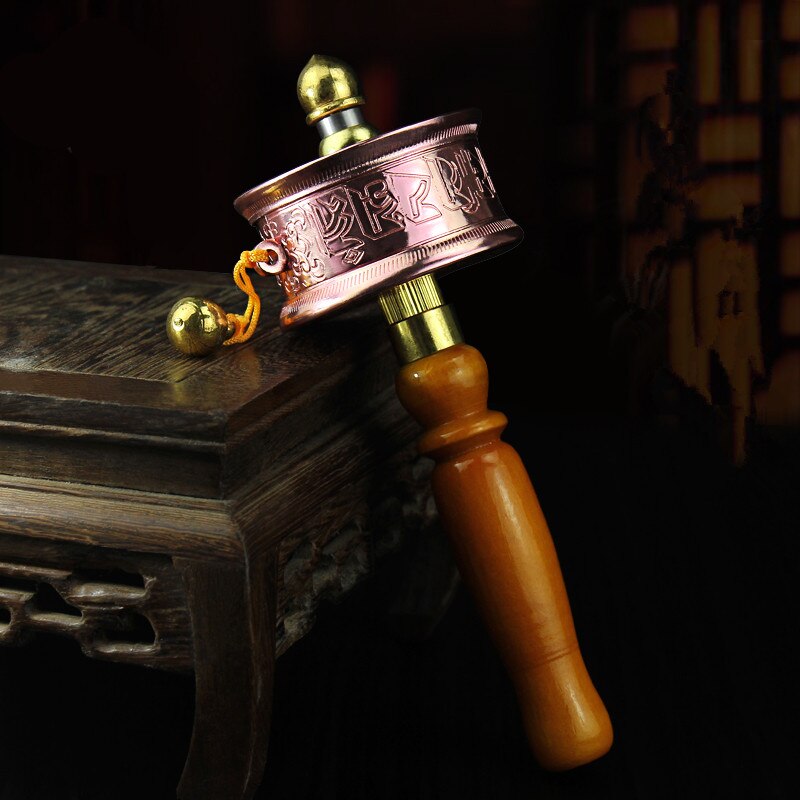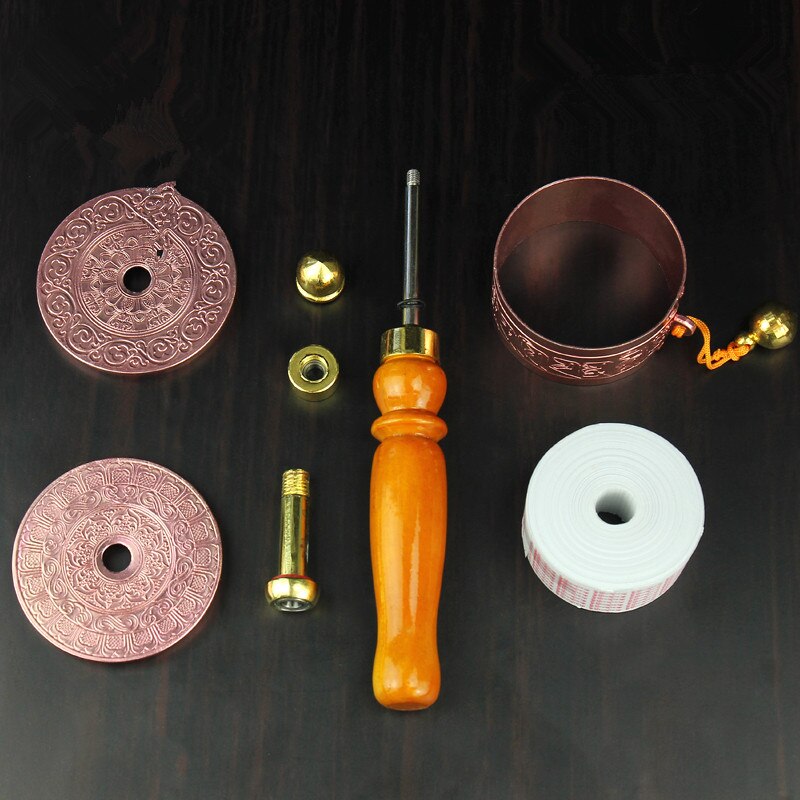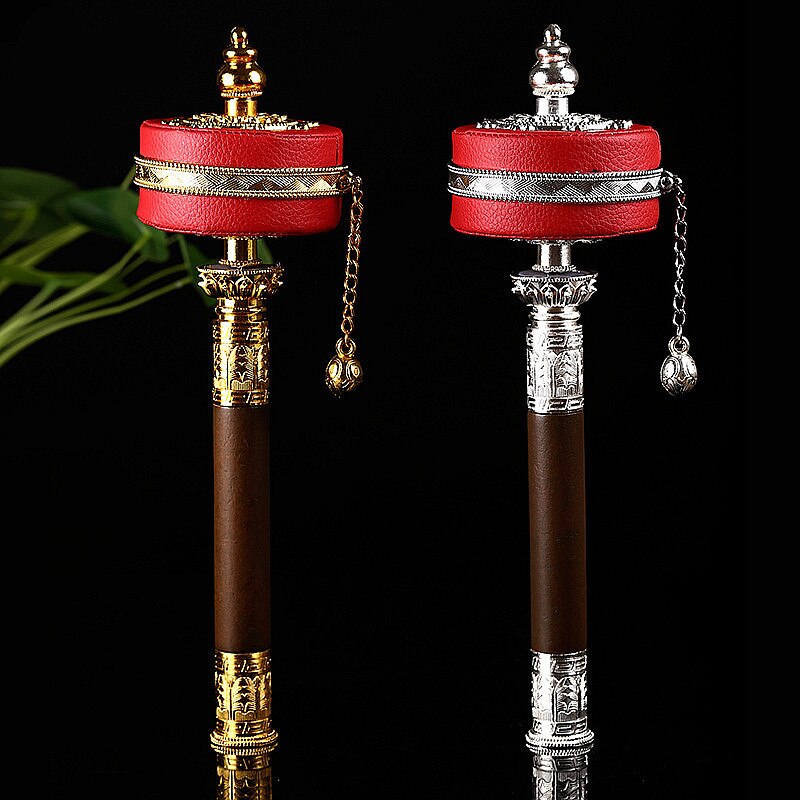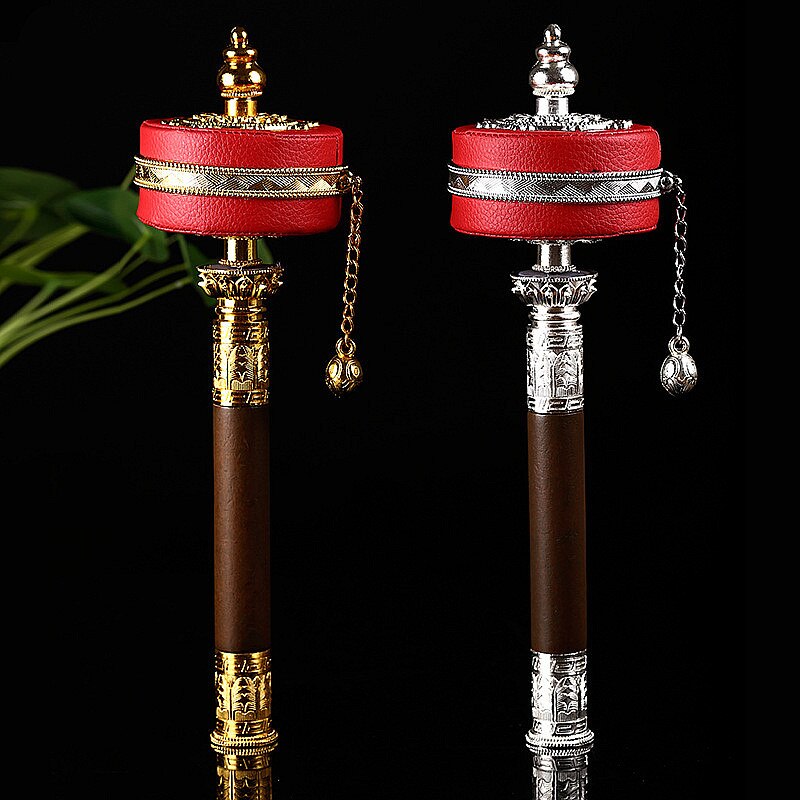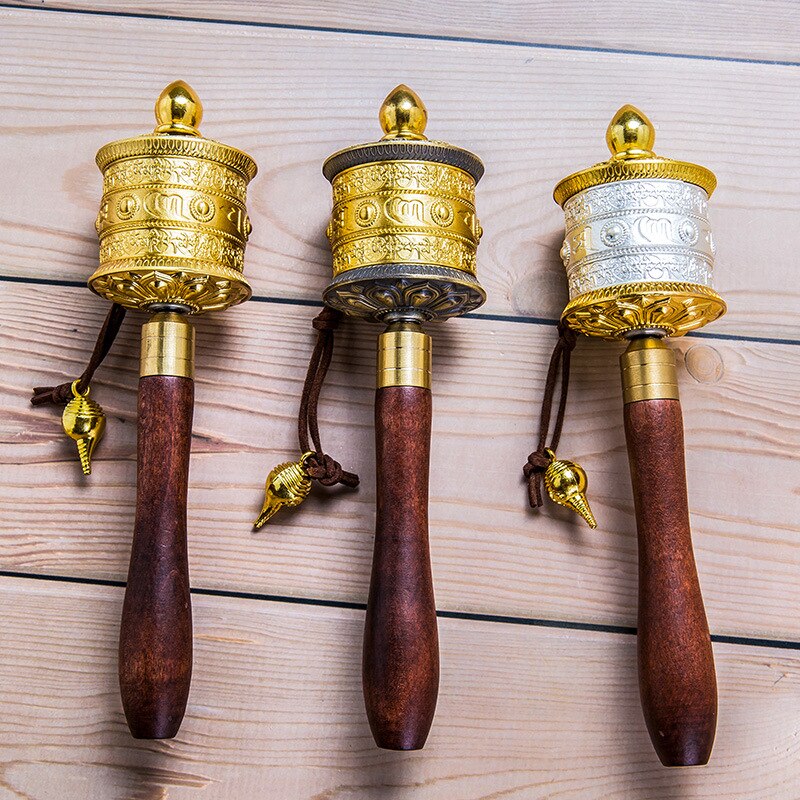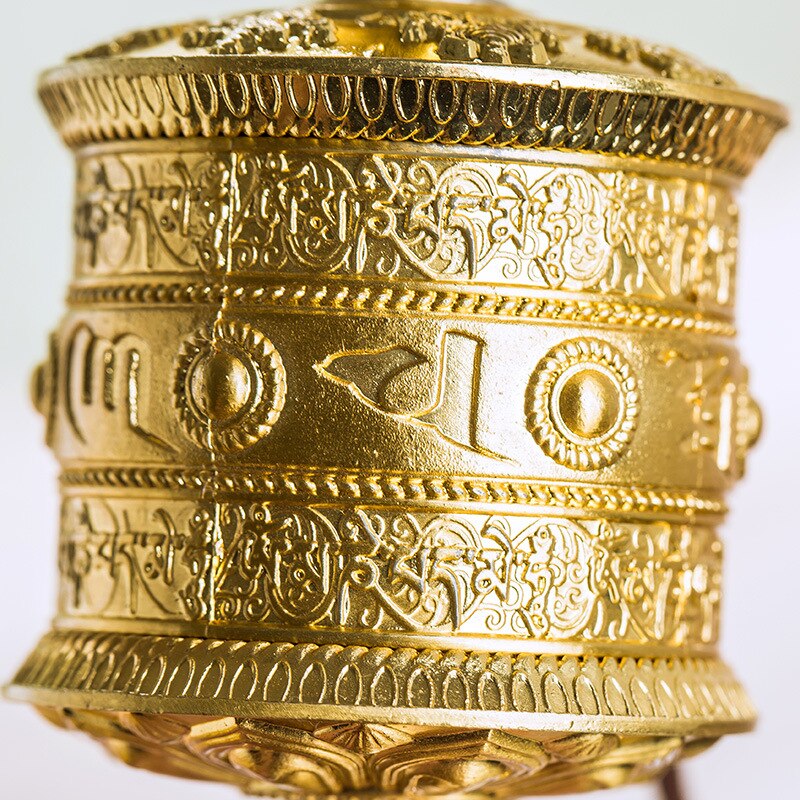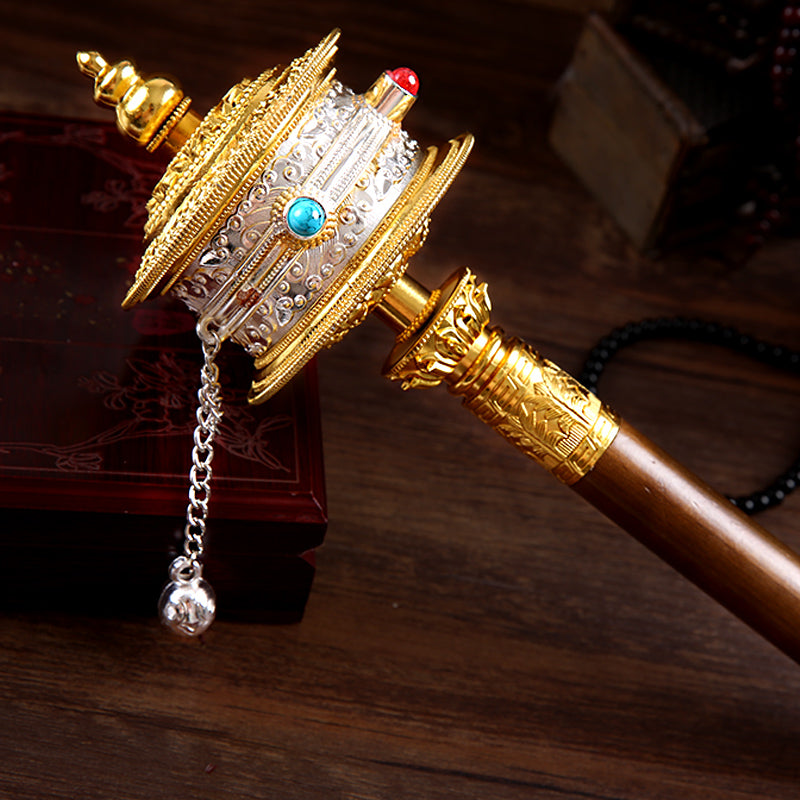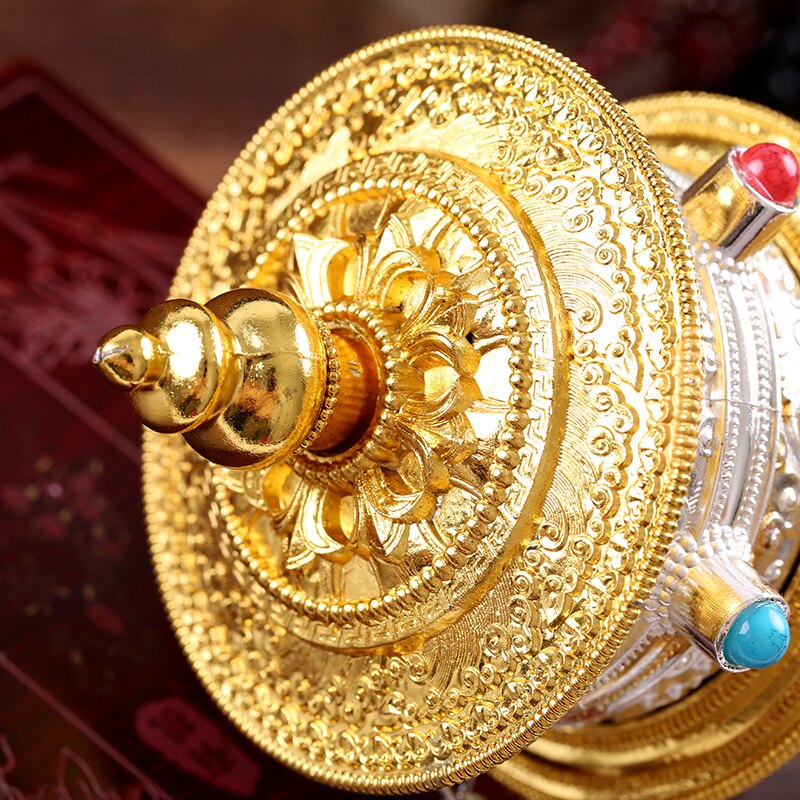Your Cart is Empty
🙏 La livraison est offerte sur tous vos achats ! 🙏
🙏 La livraison est offerte sur tous vos achats ! 🙏
🙏 La livraison est offerte sur tous vos achats ! 🙏
Notre site est chiffré de bout en bout par un protocole SSL et les paiements sont sécurisés via Stripe
Nous offrons la livraison sur tous nos produits partout dans le monde. (Hors DOM-TOM)
Vos commandes sont validées & préparées dans les 24 à 48 heures qui suivent vos achats.
 Livraison Offerte
Livraison Offerte
€179,99 €188,99 You Save 4% (€9,00)
Collections: Prayer wheel
Tibetan prayer wheels serve multiple practitioners every day on top of the world, sometimes for hours. Buddhists turn prayer wheels to gather blessings, to help all humans and to purify their karma.
According to the Grand Master Dalai Lama, "For the benefit of sentient beings, Buddhas and Bodhisattvas declare themselves in the colorful 6-syllable Buddhist prayer wheel to totally purify our negative karmas and our blindnesses, and to arouse us to actualize the completions of the path to enlightenment. ”
Spinning a colorful 6 syllable Buddhist Prayer Wheel with hundreds of mantras inside is equivalent to formulating these millions of mantras, but it is done in one rotation. The multiplication of favors is also received by using prayer wheels stimulated by wind and water. Thus the wind or water in relation to the prayer wheel will be consecrated by the prayer wheel and will thus be able to purify everything it touches from the unfavorable chakra.
We commonly observe Buddhists making their peregrination with prayer wheels in their hands, or on the occasion of their pilgrimage, they spin a colorful 6 syllable Buddhist prayer wheel in the monasteries and Buddhist centers they roam .
With each turn of the colorful 6-syllable Buddhist Prayer Wheel, the personality whose mantra is noted there oozes from the wheel into entities as abundant as mantras. In this way, if there are one million Manjushri mantras contained in the colorful 6-syllable Buddhist Prayer Wheel, then one hundred Manjushri emanations will be fulfilled on each turn of the colorful 6-syllable Buddhist Prayer Wheel and benefit Buddhists around the world.
However, it is known that the benefits of spinning the wheel of the colorful Buddhist 6-syllable Prayer Wheel with an attentive mind are a billion times stronger than spinning it with an evaporated mind.
A colorful 6 syllable Buddhist prayer wheel is a model of Buddhist processes. This technology allowed Buddhists to amplify the number of prayers they recited by the thousands.
Indeed, the colorful Buddhist 6 syllable prayer wheel is filled with copies of precepts like that of Avalokiteshvara the mantra om mani padme hum. The precept is written on very fine tissue paper as many times as it is conceivable, often thousands. The soap opera is wound on a pivot and placed in a protective roll.
In recent years, microfilm technology has made it possible to implore many, if not hundreds of billions of prayers in the blink of an eye
Prayer wheels vary in size from a small hand-held wheel to a monumental wheel sealed into the wall of a building, like a circular pole.
The wheels are made to be set in motion by hand, by wind, water or a blaze. If they are part of a monastery, practitioners spin around the building clockwise and spin the wheels while touching them. As a result, they benefit from the advantage of avoiding the sacred building and benefiting from the benefits generated by the colorful 6-syllable Buddhist prayer wheel.
Prayer wheels come in different sizes: they can be small and attached to a handle or pole, and turned over voluntarily; medium and fixed in buildings or monasteries, or monumental and perpetually turned thanks to a water mill. Despite this the small hand-colored 6 syllable Buddhist prayer wheel are by far the most popular.
The simple act of touching and spinning a colorful 6-syllable Buddhist Prayer Wheel provides a prodigious purification and accumulates an extraordinary benefit. We imagine that the more precepts one pronounces, the more consecration one earns, which increases one's chances of enjoying a more transcendent rebirth and permanently catching nirvana.
Touching or rotating the colorful 6-syllable Buddhist Prayer Wheel is said to be so powerful that you compare this power to that of a hundred monks praying a lifetime.
One of the benefits of the Colorful 6 Syllable Buddhist Prayer Wheel is that it personifies all the actions of the Buddhas and Bodhisattvas of the 10 directions. As humans return, Buddhas and Bodhisattvas manifest in the prayer wheel to purify all of our harmful chakras and confusions, and to force us to actualize the concretizations of the path to enlightenment.
Prayer using the colorful 6 Syllable Buddhist Prayer Wheel is believed to provide everything a practitioner demands.
It is strongly believed that rotating the 6 Syllable Buddhist Prayer Wheel colored with reproach and abjection will make it easier for you to exclude the four evil deeds, the five actions of immediate retribution, the eight evil views not to mention the ten non-virtues .
Anyone who runs the colorful 6-syllable Buddhist Prayer Wheel during their lifetime should never be reborn with any deformities in their life, nor with disabilities such as blindness, deafness, dumbness or infirmity.
/ p>
Prayer wheel: Mani wheel (a hand-held prayer wheel)
Prayer wheel: Water wheels (turned by flowing water)
Prayer wheel: Fire wheel (turned by the heat of a candle or an electric light)
Prayer wheel: Wind wheel (a kind of prayer wheel turns thanks to the wind)
Prayer wheel: Fixed prayer wheels
Prayer wheel: Electric Dharma Wheels (powered by electric motors)
Spinning and uttering this colorful 6-syllable Buddhist Prayer Wheel is said to be one of the wisest and most favorable approaches. Most often built around the circumference of stupas and monuments, large numbers of Buddhist prayer wheels can number in the millions for people to spin as they pass by or around buildings or stupas. clockwise.
A fine example of a large number of prayer wheels in one place may be the glorious Swayambhunath stupa, where many prayer wheels hang around the enormous Swayambhunath stupa The mantra to cry out for when spinning Buddhist prayer wheels is: "OM MANI PADME HUM" or "OM MANI PEME HUNG".




